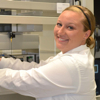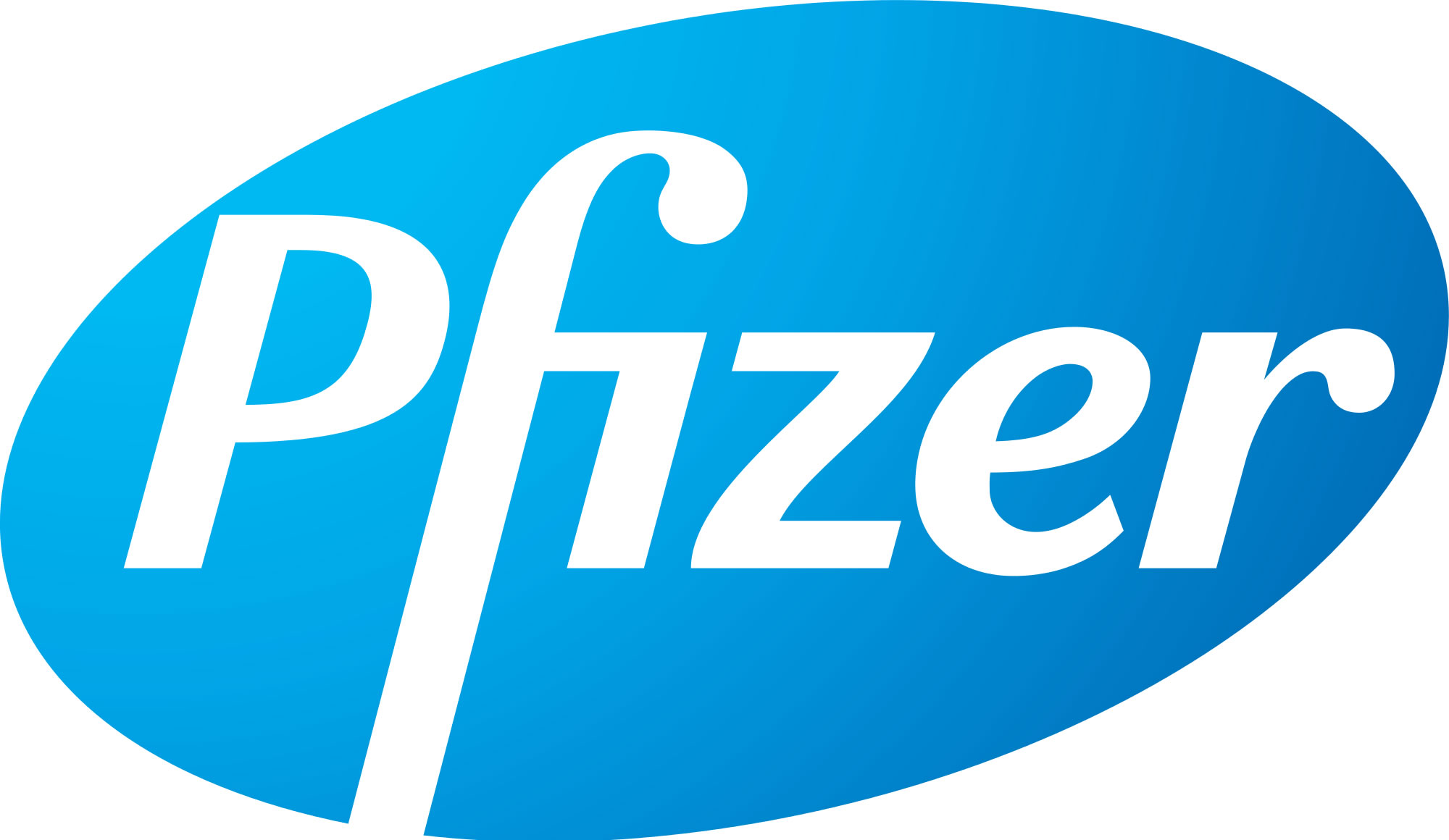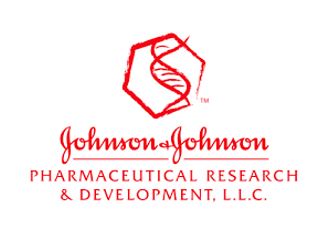Protein Folding and Function: Dr. Mallela Research Laboratory
Research in the Protein Stability, Folding, and Aggregation Laboratory is currently focused on understanding the fundamental physical mechanisms of protein stability, folding, and aggregation of disease-related and model proteins. Current research projects include studying the (1) biophysics of dystrophin and utrophin, and (2) alcohol and antimicrobial preservative-induced protein aggregation. The research group utilizes various biophysical and structural techniques that include optical spectroscopy (CD, fluorescence, and absorbance) and NMR.

Krishna Mallela PhD
Professor, Pharmaceutical Sciences Graduate Program Associate Director
- Department of Pharmaceutical Sciences
Email Address:krishna.mallela@cuanschutz.edu
Primary Phone:303-724-3576
Protein Folding and Function: Dr. Mallela Research Laboratory
Mailing Address:
- CU Anschutz
Pharmacy and Pharmaceutical Sciences Building
12850 East Montview Boulevard
Fourth Floor Room 4123
Aurora, CO 80045
Education, Licensure & Certifications
- BSc., P.B. Siddhartha College of Arts and Science, Vijayawada, India (Chemistry, Mathematics and Physics)
- MSc., Central University of Hyderabad, Hyderabad, India (Chemistry)
- PhD, Tata Institute of Fundamental Research, Mumbai, India (Physical Chemistry)
- Postgraduate Researcher, University of California, San Francisco (Biophysics)
- Postdoctoral Research Associate, University of Pennsylvania, Philadelphia (Biophysics)
- Research Assistant Professor, University of Pennsylvania, Philadelphia (Biophysics and Biochemistry)
Affiliations
- Pharmaceutical Sciences Graduate Program
- Center for Pharmaceutical Biotechnology
- Program in Structural Biology and Biophysics
- University of Colorado Cancer Center
Project 1: Structure-function-disease analysis of dystrophin and utrophin in muscular dystrophy
Muscular dystrophy (MD) refers to a group of degenerative muscle diseases that cause progressive muscle weakness. MD affects all types of muscles. For example, decreased function of heart muscles causes heart diseases that include cardiomyopathy and congestive heart failure. Duchenne MD (DMD) and Becker MD (BMD) are two prominent types of MD, which are caused by the deficiency of a vital muscle protein known as dystrophin. These dystrophin-related diseases physically weaken patients to a state of immobility, and often cause death at an early age. Dystrophin stabilizes the sarcolemma membrane against the mechanical forces associated with muscle contraction and stretch. Mutations in dystrophin trigger the disease. Although dystrophin was identified as a key molecular player in MD 30 years ago, little is known about the biophysical mechanisms that trigger the disease at the fundamental protein level.
Utrophin, the closest homologue of dystrophin (60% sequence similarity), has been shown to compensate for the loss of functional dystrophin in animal studies, but its exact biological function is not known. It binds to actin, protects actin against its depolymerization, and interacts with dystrophin-related proteins. Utrophin is confined specifically to the sarcolemma in fetal and regenerating muscle cells. After down-regulation at birth, it is only found in the neuromuscular junctions in adult muscle cells to aid in optimal synapse transmission and to play a stabilizing role at these junctions.
In this project, we are trying to understand the biophysical and structural principles of how these two important proteins function, the effect thereon of disease-causing mutations, and whether we can develop new therapies based on the fundamental understanding of structure-function of dystrophin and utrophin.
Recent Publications
- S.M. Singh, S. Bandi, and K.M.G. Mallela, The N-terminal flanking region modulates the actin binding affinity of the utrophin tandem calponin-homology domain, Biochemistry, 56 (2017) 2627-2636. PDF
- S.M. Singh, S. Bandi, and K.M.G. Mallela, The N- and C-terminal domains differentially contribute to the structure and function of dystrophin and utrophin tandem calponin-homology domains, Biochemistry, 54 (2015) 6942-6950. PDF
- S. Bandi, S.M. Singh, and K.M.G. Mallela, Interdomain linker determines primarily the structural stability of dystrophin and utrophin tandem calponin-homology domains rather than their actin-binding affinity, Biochemistry, 54 (2015) 5480-5488. PDF
- S.M. Singh, S. Bandi, D.D. Shah, G. Armstrong, and K.M.G. Mallela, Missense mutation Lys18Asn in dystrophin that triggers X-linked dilated cardiomyopathy decreases protein stability, increases protein unfolding, and perturbs protein structure, but does not affect protein function, PLoS One, 9 (2014) e110439. PDF
- S. Bandi, S.M. Singh, and ;K.M.G. Mallela, The C-terminal domain of the utrophin tandem calponin-homology domain appears to be thermodynamically and kinetically more stable than the full-length protein, Biochemistry, 53 (2014) 2209-2211. PDF
Project 2: Mechanisms of excipient interactions with pharmaceutical proteins
Excipients play a major role in formulating a drug substance into a drug product. These include antimicrobial preservatives such as benzyl alcohol to prevent the accidental growth of microbes in protein formulations, aggregation suppressors such as polysorbates, reactive oxygen scavengers such as methionine, surface deadsorbents such as silicone oil, and others. In principle, excipients should be inert substances that should merely serve as the vehicle or medium for a drug or active substance, but in reality, these can interact with protein drugs causing unwanted protein destabilization and aggregation. In this project, we are trying to understand the fundamental biophysical and structural mechanisms by which excipients interact with pharmaceutical proteins using a suite of biophysical techniques that include far-UV and near-UV circular dichroism, fluorescence, isothermal titration calorimetry, differential scanning calorimetry, and 2D NMR. This work is being done as part of our Center for Pharmaceutical Biotechnology, and please contact us for any future collaborations.
Recent Publications
- D. Shah, J. Zhang, H. Maity, and K.M.G. Mallela, Effect of photo-degradation on the structure, stability, aggregation, and function of an IgG1 monoclonal antibody, International Journal of Pharmaceutics, 547 (2018) 438-449. PDF
- S.M. Singh, S. Bandi, D.N.M. Jones, and K.M.G. Mallela, Effect of polysorbate 20 and polysorbate 80 on the higher-order structure of a monoclonal antibody and its Fab and Fc fragments probed using 2D nuclear magnetic resonance spectroscopy, Journal of Pharmaceutical Sciences, 106 (2017) 3486-3498. PDF
- R.L. Bis, S.M. Singh, J. Cabello-Villegas, and K.M.G. Mallela, Role of benzyl alcohol in the unfolding and aggregation of interferon alpha-2a, Journal of Pharmaceutical Sciences, 104 (2015) 407-415. PDF
- R.L. Bis and K.M.G. Mallela, Antimicrobial preservatives induce aggregation of interferon alpha-2a: The order in which preservatives induce protein aggregation is independent of the protein, International Journal of Pharmaceutics, 472 (2014) 356-361. PDF
- R.L. Bis, T.M. Stauffer, S.M. Singh, T.B. Lavoie, and K.M.G. Mallela, High yield soluble bacterial expression and streamlined purification of recombinant human interferon alpha-2a, Protein Expression and Purification, 99 (2014) 138-146. PDF
- D. Shah, J. Zhang, H. Maity, and K.M.G. Mallela, Effect of photo-degradation on the structure, stability, aggregation, and function of an IgG1 monoclonal antibody, International Journal of Pharmaceutics, 547 (2018) 438-449. Abstract | Full text | PDF
- D. Shah, S.M. Singh, M. Dzieciatkowska, and K.M.G Mallela, Biophysical analysis of the effect of chemical modification by 4-oxononenal on the structure, stability, and function of binding immunoglobulin protein (BiP), PLoS One, 12 (2017) e0183975. Abstract | Full text | PDF
- S.M. Singh, S. Bandi, D.N.M. Jones, and K.M.G. Mallela, Effect of polysorbate 20 and polysorbate 80 on the higher-order structure of a monoclonal antibody and its Fab and Fc fragments probed using 2D nuclear magnetic resonance spectroscopy, Journal of Pharmaceutical Sciences, 106 (2017) 3486-3498. Abstract | Full text | PDF
- S.M. Singh, S. Bandi, and K.M.G. Mallela, The N-terminal flanking region modulates the actin binding affinity of the utrophin tandem calponin-homology domain, Biochemistry, 56 (2017) 2627-2636. Abstract | Full text | PDF
- S.M. Singh, S. Bandi, and K.M.G. Mallela, The N- and C-terminal domains differentially contribute to the structure and function of dystrophin and utrophin tandem calponin-homology domains, Biochemistry, 54 (2015) 6942-6950. Abstract | Full text | PDF
- S. Bandi, S.M. Singh, and K.M.G. Mallela, Interdomain linker determines primarily the structural stability of dystrophin and utrophin tandem calponin-homology domains rather than their actin-binding affinity, Biochemistry, 54 (2015) 5480-5488. Abstract | Full text | PDF
- R.L. Bis, S.M. Singh, J. Cabello-Villegas, and K.M.G. Mallela, Role of benzyl alcohol in the unfolding and aggregation of interferon alpha-2a, Journal of Pharmaceutical Sciences, 104 (2015) 407-415. Abstract | Full text | PDF
- S.M. Singh, S. Bandi, D.D. Shah, G. Armstrong, and K.M.G. Mallela, Missense mutation Lys18Asn in dystrophin that triggers X-linked dilated cardiomyopathy decreases protein stability, increases protein unfolding, and perturbs protein structure, but does not affect protein function, PLoS One, 9 (2014) e110439. Abstract | Full text | PDF.
- R.L. Bis and K.M.G. Mallela, Antimicrobial preservatives induce aggregation of interferon alpha-2a: The order in which preservatives induce protein aggregation is independent of the protein, International Journal of Pharmaceutics, 472 (2014) 356-361. Abstract | Full text | PDF
- R.L. Bis, T.M. Stauffer, S.M. Singh, T.B. Lavoie, and K.M.G. Mallela, High yield soluble bacterial expression and streamlined purification of recombinant human interferon alpha-2a, Protein Expression and Purification, 99 (2014) 138-146. Abstract | Full text | PDF
- S. Bandi, S.M. Singh, and K.M.G. Mallela, The C-terminal domain of the utrophin tandem calponin-homology domain appears to be thermodynamically and kinetically more stable than the full-length protein, Biochemistry, 53 (2014) 2209-2211. Abstract | Full Text | PDF
- S.M. Singh, S. Bandi, S.J. Winder, and K.M.G. Mallela, The actin binding affinity of the utrophin tandem calponin-homology domain is primarily determined by its N-terminal domain, Biochemistry, 53 (2014) 1801-1809. Abstract | Full Text | PDF
- R.L. Hutchings, S.M. Singh, J. Cabello-Villegas, and K.M.G. Mallela, Effect of antimicrobial preservatives on partial protein unfolding and aggregation, Journal of Pharmaceutical Sciences, 102 (2013) 365-376. Abstract | Full text | PDF
- S.M. Singh and K.M.G. Mallela, The N-terminal actin-binding tandem calponin-homology (CH) domain of dystrophin is in a closed conformation in solution and when bound to F-actin, Biophysical Journal, 103 (2012) 1970-1978. Abstract | Full text | PDF. Selected for a New & Notable: Biophysical Journal, 103 (2012) 1818-1819. Full text | PDF
- S.M. Singh, J.F. Molas, N. Kongari, S. Bandi, G.S. Armstrong, S.J. Winder, and K.M.G. Mallela, Thermodynamic stability, unfolding kinetics, and aggregation of the N-terminal actin binding domains of utrophin and dystrophin, Proteins: Structure, Function, and Bioinformatics, 80 (2012) 1377-1392. Abstract | Full text | PDF
- S.M. Singh, R.L. Hutchings, and K.M.G. Mallela, Mechanisms of m -cresol induced protein aggregation studied using a model protein cytochrome c, Journal of Pharmaceutical Sciences, 100 (2011) 1679-1689. Abstract | Full text | PDF
- S.M. Singh, N. Kongari, J. Cabello-Villegas, and K.M.G. Mallela, Mutations in dystrophin that trigger muscular dystrophy decrease protein stability and lead to cross-beta aggregates, Proceedings of the National Academy of Sciences of the United States of America, 107 (2010) 15069-15074. Abstract | Full text | PDF
- S.M. Singh, J. Cabello-Villegas, R.L. Hutchings, and K.M.G. Mallela, Role of partial protein unfolding in alcohol-induced protein aggregation, Proteins: Structure, Function, and Bioinformatics, 78 (2010) 2625-2637. Abstract | Full text | PDF
- K.M.G. Mallela, Pharmaceutical Biotechnology – Concepts and Applications, Human Genomics, 4 (2010) 218-219. Full text | PDF
- S. Bédard †, M.M.G. Krishna †, L. Mayne, and S.W. Englander, Protein folding: Independent unrelated pathways or predetermined pathway with optional errors, Proceedings of the National Academy of Sciences of the United States of America, 105 (2008) 7182-7187. ( † Equal contribution) Abstract | Full text | PDF
- S.W. Englander, L. Mayne, and M.M.G. Krishna, Protein folding and misfolding: Mechanism and principles, Quarterly Reviews of Biophysics, 40 (2007) 287-326. Abstract | Full text | PDF
- M.M.G. Krishna, H. Maity, J.N. Rumbley, and S.W. Englander, Branching in the sequential folding pathway of cytochrome c, Protein Science, 16 (2007) 1946-1956. Abstract | Full text | PDF
- M.M.G. Krishna and S.W. Englander, A unified mechanism for protein folding: Predetermined pathways with optional errors, Protein Science, 16 (2007) 449-464. Abstract | Full text | PDF
- M.M.G. Krishna, H. Maity, J.N. Rumbley, Y. Lin, and S.W. Englander, Order of steps in the cytochrome c folding pathway: Evidence for a sequential stabilization mechanism, Journal of Molecular Biology, 359 (2006) 1410-1419. Abstract | Journal cover | Full text | PDF
- R. Pidikiti, T. Zhang, K.M.G. Mallela , M. Shamim, K.S. Reddy, and J.S. Johansson, Sevoflurane-induced structural changes in a four-alpha-helix bundle protein, Biochemistry, 44 (2005) 12128-12135. Abstract | PDF
- R. Pidikiti, T. Zhang, K.M.G. Mallela , M. Shamim, K.S. Reddy, and J.S. Johansson, Structural changes in a four-alpha-helix bundle protein following sevoflurane binding, International Congress Series, 1283 (2005) 155-159. Abstract | Full text | PDF
- R. Pidikiti, M. Shamim, K.M.G. Mallela, K.S. Reddy, and J.S. Johansson, Expression and characterization of a four-alpha-helix bundle protein that binds the volatile general anesthetic halothane, Biomacromolecules, 6 (2005) 1516-1523. Abstract | Full text | PDF
- H. Maity, M. Maity, M.M.G. Krishna, L. Mayne, and S.W. Englander, Protein folding: The stepwise assembly of foldon units, Proceedings of the National Academy of Sciences of the United States of America, 102 (2005) 4741-4746. Abstract | Full text | PDF
- M.M.G. Krishna and S.W. Englander, The N-terminal to C-terminal motif in protein folding and function, Proceedings of the National Academy of Sciences of the United States of America, 102 (2005) 1053-1058. Abstract | PDF
- M.M.G. Krishna, Y. Lin, and S.W. Englander, Protein misfolding: Optional barriers, misfolded intermediates, and pathway heterogeneity, Journal of Molecular Biology, 343 (2004) 1095-1109. Abstract | Full text | PDF
- M.M.G. Krishna, L. Hoang, Y. Lin, and S.W. Englander, Hydrogen exchange methods to study protein folding, Methods, 34 (2004) 51-64. Abstract | Full text | PDF
- M.M.G. Krishna, Y. Lin, L. Mayne, and S.W. Englander, Intimate view of a kinetic protein folding intermediate: Residue-resolved structure, interactions, stability, folding and unfolding rates, homogeneity, Journal of Molecular Biology, 334 (2003) 501-513. Abstract | Full text | PDF
- L. Hoang, H. Maity, M.M.G. Krishna, Y. Lin, and S.W. Englander, Folding units govern the cytochrome c alkaline transition, Journal of Molecular Biology, 331 (2003) 37-43. Abstract | Full text | PDF
- M.M.G. Krishna, Y. Lin, J. Rumbley, and S.W. Englander, Cooperative omega loops in cytochrome c: Role in folding and function, Journal of Molecular Biology, 331 (2003) 29-36. Abstract | Full text | PDF
- L. Hoang, S. Bédard, M.M.G. Krishna, Y. Lin, and S.W. Englander, Cytochrome c folding pathway: Kinetic native-state hydrogen exchange, Proceedings of the National Academy of Sciences of the United States of America,
99 (2002) 12173-12178. Abstract | Full text | PDF
Corrections: Proceedings of the National Academy of Sciences of the United States of America, 99 ( 2002) 15831. Full text | PDF - M.M.G. Krishna, Studying how a protein folds, The Alchemist (Web journal of chemweb.com), 2002. PDF
- S.W. Englander and M.M.G. Krishna, Hydrogen exchange, Nature Structural Biology, 8 (2001) 741-742. Full text | PDF
- A.S.R. Koti, M.M.G. Krishna, and N. Periasamy, Time-resolved area-normalized emission spectroscopy (TRANES): A novel method for confirming emission from two excited states, Journal of Physical Chemistry A 105 (2001) 1767-1771. Abstract | Full text | PDF
- M.M.G. Krishna, A. Srivastava, and N. Periasamy, Rotational dynamics of surface probes in lipid vesicles, Biophysical Chemistry, 90 ( 2001) 123-133. Abstract | Full text | PDF
Erratum: Biophysical Chemistry, 91 (2001) 209. Full text | PDF - A. Mishra, G.B. Behera, M.M.G. Krishna, and N. Periasamy, Time-resolved fluorescence studies of aminostyrylpyridinium dyes in organic solvents and surfactant micelles, Journal of Luminescence, 92 (2001) 175-188. Abstract | Full text | PDF
- M.M.G. Krishna, J. Samuel, and S. Sinha, Brownian motion on a sphere: Distribution of solid angles, Journal of Physics A: Mathematical and General, 33 (2000) 5965-5971. Abstract | Full text | PDF
Also on ArXiv: http://arxiv.org/abs/cond-mat/0005345v3 | PDF - M.M.G. Krishna, R. Das, N. Periasamy, and R. Nityananda, Translational diffusion of fluorescent probes on a sphere: Monte Carlo simulations, theory and fluorescence anisotropy experiment, Journal of Chemical Physics, 112 (2000) 8502-8514. Abstract | Full text | PDF
- M.M.G. Krishna, Dynamics of Fluorescent Probes in Biological Systems, PhD Thesis, Tata Institute of Fundamental Research, University of Mumbai, India, 1999. PDF © M.M.G. Krishna & N. Periasamy. Please cite the thesis when referring to unpublished results.
- M.M.G. Krishna and N. Periasamy, Location and orientation of DODCI in lipid bilayer membranes: Effects of lipid chain length and unsaturation, Biochimica et Biophysica Acta (Biomembranes), 1461 (1999) 58-68. Abstract | Full text | PDF
- M.M.G. Krishna, Excited state kinetics of the hydrophobic probe nile red in membranes and micelles, Journal of Physical Chemistry A, 103 (1999) 3589-3595. Abstract | Full text | PDF
Additions and Corrections: Journal of Physical Chemistry A, 103 (1999) 4129. Full text | PDF
More Corrections: PDF - M.M.G. Krishna and N. Periasamy, Orientational distribution of linear dye molecules in bilayer membranes, Chemical Physics Letters, 298 (1998) 359-367. Abstract | Full text | PDF
- M.M.G. Krishna, V.K. Rastogi, N. Periasamy, and K.V.R. Chary, Fluorescence and NMR studies on human seminal plasma prostatic inhibin: Association of lifetimes with sterically constrained tryptophans, Journal of Physical Chemistry B, 102 (1998) 5520-5528. Abstract | Full text | PDF
- M.M.G. Krishna and N. Periasamy, Fluorescence of organic dyes incorporated in lipid membranes: Site of solubilization and the effects of viscosity and refractive index on lifetimes, Journal of Fluorescence, 8 (1998) 81-91. Abstract | Full text | PDF
- N.C. Maiti, M.M.G. Krishna, P.J. Britto, and N. Periasamy, Fluorescence dynamics of dye probes in micelles, Journal of Physical Chemistry B, 101 (1997) 11051-11060. Abstract | Full text | PDF
- M.M.G. Krishna and N. Periasamy, Spectrally constrained global analysis of fluorescence decays in biomembrane systems, Analytical Biochemistry, 253 (1997) 1-7. Abstract | Full text | PDF
For comments, suggestions and complaints, please email Krishna.Mallela@CUAnschutz.edu.
The PDF files provided on this page are strictly for scientific, non-commercial research only. For all other purposes, the users should contact the respective copyright holders.
Dinen Shah: Graduate Student Dinen’s current research is on determining the effects of lipid peroxidation products on the structure and function of a heat shock protein, 78 kDa glucose-regulated protein (GRP78), and the effect of chemical modifications such as oxidation and monoclonal antibodies. |  |
Scott Pardee: Graduate Student Scott's current research is on excipient interactions with pharmaceutical proteins. |  |
Dr. Swati Bandi: Postdoctoral Fellow Swati’s current research is on characterizing the structural dynamics of tandem calponin-homology domains of dystrophin and utrophin, and polysorbate interactions with monoclonal antibodies. |  |
Dr. Vaibhav Upadhyay: Postdoctoral Fellow Vaibhav’s current research is on characterizing the structure-function of dystrophin and utrophin. |  |
Dr. Regina L. Bis: Postdoctoral Fellow Regina’s current research is on determining the mechanisms of alcohol and antimicrobial-preservative-induced aggregation of a model protein cytochrome c and a pharmaceutical protein interferon alpha-2a. |  |
Justine F. Molas: Graduate Student Justine optimized the expression and purification protocols of dystrophin and utrophin, and did initial biophysical characterization of these proteins. |  |
Darin Brown: Graduate Student Darin worked on the expression and purification of death domains, Fas, FADD, DR4 & DR5, which are involved in apoptotic signaling pathways. |  |
Joseph Rower: Graduate Student Joseph worked on the effect of Hofmeister series on thermal aggregation of cytochrome c. |  |
Dr. Surinder M. Singh: Postdoctoral Fellow Surinder’s current research is on characterizing the biophysics of dystrophin and utrophin, two key proteins involved in muscular dystrophy. |  |
Geoffrey Armstrong, University of Colorado Boulder
NMR experiments on utrophin and dystrophin
David Fela, NPS Pharmaceuticals
Biophysical characterization of parathyroid hormone (PTH) using NMR
Vivian Hook, University of California San Diego
Dystrophin expression in muscle cells
Thomas Lavoie, PBL Assay Science
Functional assays on interferon alpha-2a
David Nesbitt, University of Colorado Boulder
Fluorescence experiments on dystrophin and utrophin
Tara Stauffer, PBL Assay Science
Antiviral and antiproliferative assays on interferon alpha-2a
Steve Winder, University of Sheffield
Expression vectors of dystrophin and utrophin N-ABDs, and their purification and actin-binding assays
Deborah Wuttke, University of Colorado Boulder
NMR experiments on dystrophin and utrophin
Jane and Charlie Butcher Foundation







Skaggs Scholars Program
The ALSAM Foundation

NIH Leadership Training Grant in Pharmaceutical Biotechnology



